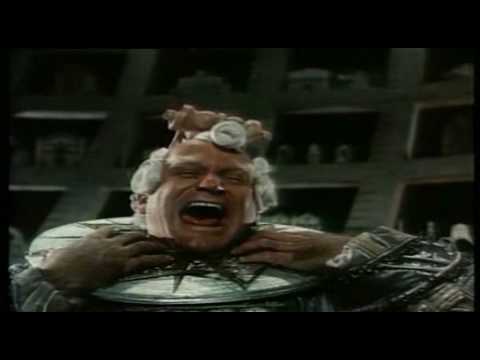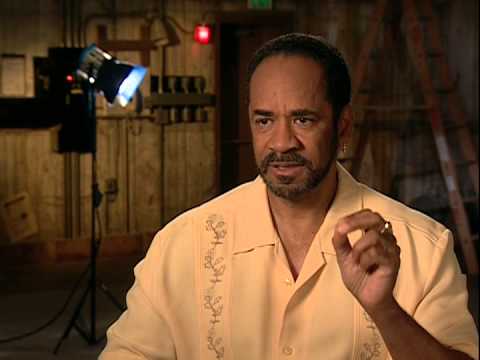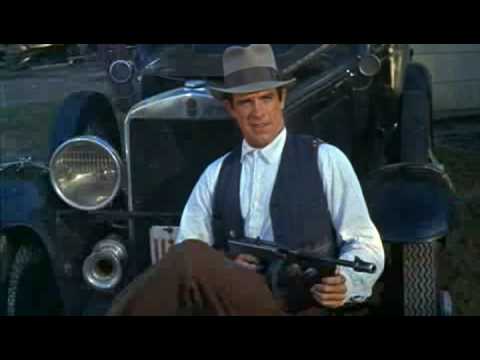10American History X1998
The Sabotage: After director Tony Kaye delivered his final cut of this crime drama, star Edward Norton reportedly went into the editing room to emphasize his own performance. Norton played neo-Nazi Derek Vinyard, who curb-stomps a black man to death, gets gang-raped in prison, and delivers surprisingly well-spoken monologues in defense of white supremacy. Kaye bickered with his producers and Norton to restore his original version. He even brought religious representatives, including a priest, into a meeting with him. When that didn’t work out, he spent $100,000 to print messages attacking the production. Did He Succeed? No. Tony Kaye couldn’t release his cut of the film. The movie went on to be a huge cult hit (IMDB user consensus rates it at the time of writing as the 31st best film ever). Edward Norton received an Academy Award nomination, and his performance was praised above anything else in the film, casting Kaye in a poor light for fighting him on the changes. Kaye’s damaged reputation meant that he didn’t release another film until the self-financed 2006 documentary Lake of Fire eight years later.
9The Adventures Of Baron Munchausen1988
The Sabotage: This Terry Gilliam fantasy film, based on the tales of 18th-century nobleman Hieronymus Munchhausen, ran millions of dollars over budget even before shooting began. The studio, Columbia Tri-Star, was bought out by Sony in the late 1980s, and Sony found itself obligated to release the film. Yet Sony executives didn’t want an acquisition from Columbia Tri-Star to outshine any of their original productions. Sony barely did any marketing for the film and made only 117 prints. This was ridiculously small for a blockbuster and guaranteed that few theaters could screen it. Did They Succeed? Yes, Sony succeeded in making little money off the expensive film that they’d acquired. Even though the movie was a critical darling (94 percent of critics liked it, according to Rotten Tomatoes) and had nearly record-breaking grosses in the few theaters that showed it, Sony allowed the movie to bomb. Decades later, this failure still loomed over Gilliam’s career.
8Idiocracy2006
The Sabotage: Depending on whom you ask, this dystopian film from Mike Judge (Beavis & Butthead, Office Space) either mocks anti-intellectualism or mocks the elitist idea that society is getting dumber. Either way, this story of a future where commercialism has reduced mankind to idiots apparently angered 20th Century Fox, who buried it mercilessly. Some speculate that Fox thought the film’s anti-corporate message targeted Fox and Rupert Murdoch. It’s also possible that they feared lawsuits from brands like Starbucks and Carl’s Jr., which the film spoofed. The studio waited two years before releasing the film. The eventual release was so small that it skipped major markets like New York City. There were zero attempts to promote it. Fox didn’t even list the film on its website. Did They Succeed? Idiocracy only made $400,000, so it failed financially. However, it didn’t kill Mike Judge’s career. He released the much more successful Extract three years later. If nothing else, the film’s title has become a popular bit of slang, so at least that’s some cultural impact.
7The Critic1994–1995
The Sabotage: This cartoon from Simpsons show-runners Al Jean and Mike Reiss ran on ABC for one season before being picked up by Fox in 1995. It had done poorly on ABC (running against the Winter Olympics) but it seemed to have fresh promise on its new network. There was just one problem: The president of Fox hated it. When he and his colleagues previewed two episodes, he allegedly asked those there why they were laughing. When they replied that the show was funny, he yelled, “NO IT’S NOT!” The president moved the The Critic‘s time slot to make it harder for viewers to know when to tune in. The network didn’t advertise it. Mike Reiss called this a perfect example of a network “actively killing [its] own show.” Did They Succeed? Yes. An initially successful and highly rated show on Fox quickly lost its audience and didn’t receive another season. Still, at least the show has a cult following decades later.
6Casino Royale1967
The Sabotage: This film was based on the first James Bond story (which later inspired the 2006 Daniel Craig film) but turned into a spoof of the series, with Peter Sellers as James Bond–surrogate Evelyn Tremble. Initially, Sellers was a perfectionist. Later, he became so uncooperative that he refused to share a single shot with costar Orson Welles. Woody Allen was also working on the movie, and with his hair combed and his glasses off, he looked like Peter Sellers. When Columbia Chairman Leo Jaffe visited his hotel, he mistook Sellers for Allen and began ranting at him about how horrible Sellers was. Sellers responded by immediately flying to Geneva in the middle of production, while thousands of extras were on the payroll for his scenes. Did He Succeed? No. Feldman hired numerous other actors to play other “James Bond” characters, reducing Peter Sellers’s character to a subplot. This resulted in a very muddled plot, and it drove up the budget enormously, but Casino Royale still succeeded financially.
5The Telephone1988
The Sabotage: The Telephone is essentially a stage show. The whole movie takes place in the apartment of Whoopi Goldberg’s character, who makes prank calls. Goldberg hated the completed film so much that she sued New World Pictures for $5 million to keep them from releasing it. Ostensibly, this was because she’d been denied the creative control that her contract had promised her. Production insiders like screenwriter Terry Southern, however, adamantly claim that it was because she hated the movie. Did She Succeed? Whoopi Goldberg lost in court. She needn’t have bothered: The Telephone was a complete bomb and is now mostly remembered for her lawsuit. A curious sort of inversion of the situation happened in 1995, when Goldberg was threatened with a lawsuit if she didn’t appear in Theodore Rex.
4‘A Fish Story’1979
The Sabotage: WKRP in Cincinnati was one of the most acclaimed American television shows of the 1970s and early 1980s. It launched the band Blondie, among other achievements. It also dealt with issues like draft dodgers and workplace discrimination, driving CBS to ask show-runner Hugh Wilson to lighten the tone. Peeved by this feedback, Wilson decided to spite the network with the most cliched, goofy, unbearable episode he could make. It featured contrived mistaken-identity gags, a costumed mascot, and paint being thrown on people. Did He Succeed? He failed in the best way possible. The episode was very popular with audiences and very highly rated. Wilson continued to hate it, crediting the episode to an alias rather than to himself. The lesson of the story: It’s impossible to dumb comedy down too much. There’ll always be someone dumb enough to like it.
3Un Chien Andalou1929
The Sabotage: This collaboration between arthouse absurdist filmmaker Luis Bunuel and depraved legend Salvador Dali was designed to be meaningless. It featured imagery that looked deep—ants coming out of hands, a man tied to a piano, priests stopping a rape—but the filmmakers’ real goal was to spark a riot. It wouldn’t be the only example of leftist avant-garde movies causing riots. Bunuel even brought rocks to screenings to pelt at audiences. Did They Succeed? Un Chien Andalou became a hit and was even shown in revival houses for decades. Today, it’s considered a masterpiece and has influenced such directors as David Lynch with his film Blue Velvet. Bunuel stuck to his goal of causing an audience riot. His follow-up, 1931’s L’Age Dor, finally brought about the violence in theaters he wanted and was banned all over Europe for its shocking content. Dreams do come true if you work at them.
2Bonnie And Clyde1967
The Sabotage: Warren Beatty’s pet project pushed the envelope hard with graphic violence. Unusually for the time, the main characters also happen to be sympathetic villains. It was a weird combination of then-modern counterculturalism and an homage to old-fashioned gangster movies from the 1930s. Jack Warner, one of the original Warner Brothers, never wanted to produce this movie. To get him to finance it, Warren Beatty supposedly had to go down to his hands and knees. When Bonnie and Clyde was screened for him, Jack warned Beatty and his coworkers that if he had to go the bathroom at all during the movie, that meant it was no good. The picture ultimately was, as he deemed it, “a three-piss picture.” So the movie was scheduled for the worst possible time, and its advertising budget was cut significantly. Did He Succeed? Certainly not. Beatty personally heavily promoted the film, and it became the company’s second-biggest moneymaker at the time. It is widely cited as starting cinema’s youth movement (it came out two years before Easy Rider). Jack Warner urinating three times during a film preview should have become the seal of approval for future Warner Brothers productions.
1Leonard Part 61987
The Sabotage: Bill Cosby’s despised spy spoof was based off his own pitch about an agent coming out of retirement. It features a scene in which Cosby fights a vegetarian with a hot dog, to give an idea of its level of humor. Cosby put Whoopi Goldberg’s campaign against her vehicle to shame. He went on talk shows to warn audiences to skip the film. He boycotted the premiere despite pleas from sponsor Coca-Cola. This wasn’t just a misguided sort of spoof marketing campaign: Cosby explicitly told friends and members of the press not to see it. Did He Succeed? He succeeded spectacularly. The movie made back barely one-fifth of its budget during its theatrical run. But Cosby wasn’t done with his attempts to kill the movie. He then bought the television rights to keep it from being broadcast to home viewers. Dustin Koski really wants the latest Listverse book to succeed, weird as that might sound.
























